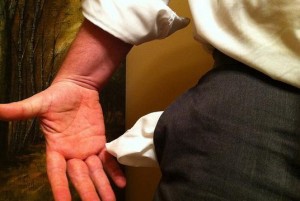The Rich, The Poor, and the Dow

It is simply the case that in financial policy, particularly, we seldom think through the consequences of our actions. Very clever men have a capacity for very great mistakes which often elude simpler souls. Western money printing is slowly burning the bridges between rich and poor. Whatever the economic benefit (and I am dubious there), it is worth considering that there is a significant social cost.
In The Telegraph, Thomas Pascoe argues that quantitative easing is widening the gap between the rich and poor because it mostly benefits people who have assets and are rewarded when the stock market booms.
Quantitative easing! What a boring term! What it essentially means is that the Fed uses the central banks to invent money out of thin air, which is then pumped into big banks like Bank of America and J.P. Morgan Chase, which is then supposed to take that money and lend it to regular people to buy houses and cars and start their businesses (Planet Money has a good primer on quantitative easing here).
But the banks aren’t lending the money to consumers — not like they used to, anyway, because of the fallout during the financial crisis. So all that money ends up in trading accounts. The Dow hit an all-time high yesterday, and the poor, the people who don’t have assets or money in investment accounts aren’t going to benefit from the market surge. Some may argue that that rich will take whatever money they’re making from the markets and use it to create jobs. Some of that may happen, but the data out there shows that inequality has been expanding during the recovery, not contracting.
Photo: danielmoyle
Support The Billfold
The Billfold continues to exist thanks to support from our readers. Help us continue to do our work by making a monthly pledge on Patreon or a one-time-only contribution through PayPal.
Comments